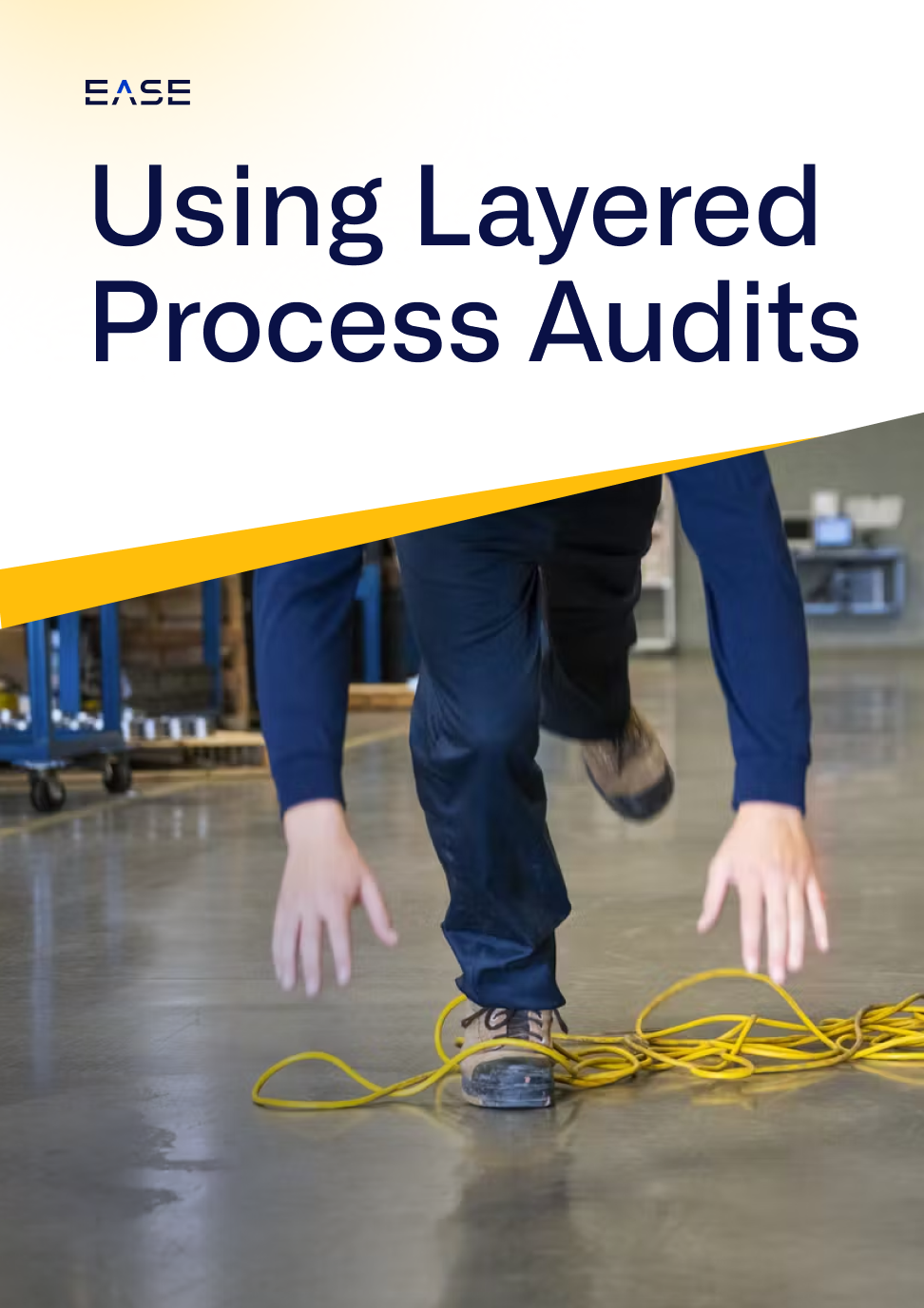7 Characteristics of a Culture of Engagement

Employee engagement in the U.S. fell to 32% in 2022, with nearly 2 in 3 workers disengaged from their jobs according to a recent Gallup survey.
This decline in engagement has clear implications for manufacturers, including risks to quality, safety and overall business performance.
Companies can counteract this trend, however, by intentionally working to build a culture of employee engagement. Characterized as having energy and enthusiasm for their work, engaged workers make businesses stronger—a core goal more important than ever in the face of economic headwinds.
Here we explore 7 characteristics of a culture of engagement, examining the role of layered process audits (LPAs) and how to use them to engage employees.
Download your free Ultimate Guide to Layered Process Audits for more LPA question best practices, examples and tips
1. The Business Performs Better
A notable quality shared among companies with an engaged workforce is that they perform better across a range of business metrics. Research from Gallup comparing high and low performers reveals that the top-quartile companies in employee engagement experience lower employee turnover, as well as:
- 18% higher productivity
- 64% fewer safety incidents
- 41% fewer quality defects
- 81% lower absenteeism
All of this adds to the bottom line, with top performers seeing 23% higher profitability than the bottom-quartile companies.
2. Managers Check In Regularly
Having a meaningful conversation with individual team members is the one habit Gallup identifies as the most important for boosting employee engagement. That’s because regular check-ins address several factors related to disengagement by providing opportunities to:
- Demonstrate how the employee is part of the company’s larger mission
- Clarify expectations
- Ensure people have what they need to do their jobs
- Show employees that people care about them
LPAs are a system of daily process checks used by manufacturers to identify variation that causes quality problems. Done correctly, they open the door to meaningful conversations with operators and provide a structured approach to connecting managers with front-line employees.
3. Workers See Their Contribution
One reason disengaged employees or “quiet quitters” are disconnected from their jobs is that they don’t feel their work matters. Engaged employees, on the other hand, are connected to the company’s mission and understand their role in it.
Part of what makes LPAs so effective is that they help make this vital connection for operators. LPA questions should include asking the operator the reason behind performing a certain step, reinforcing the ‘why’ behind the procedure and the larger impact of their work.
4. Problems Get Solved
When people care about their work, they take ownership of issues that they come across and don’t just ignore problems. What does this look like in practical terms?
- People feel comfortable raising issues to management
- Employees know problems will be addressed and not left untouched
- They make corrections wherever possible instead of expecting someone else to fix problems
- In LPAs, you don’t see a lot of layer 2 findings that layer 1 auditors should have caught—a sure sign people are ignoring problems
In other words, employees take a “see something, say something” attitude, as opposed to passing the buck.
5. Management Asks for Ideas
Part of showing people you care means asking for their input, feedback and ideas. A culture of engagement is one of communication, which must necessarily go both ways.
From an LPA perspective, this means taking time to have conversations with operators about:
- How to improve the process
- Why they perform an operation a certain way
- Which LPA questions would be useful in their work area vs. ones that don’t apply
6. Employees Are Accountable
In highly engaged workplace cultures, people are accountable for their work and their results. In a manufacturing environment, this means:
- Operators perform work according to the standard
- Auditors do their LPAs on time
- Action items and mitigations are completed in a timely manner
7. Leadership Recognizes Good Work
Providing recognition is an integral part of engaging employees. Recognizing operators for doing things right demonstrates a genuine commitment to safety and quality, also showing them that people care. LPAs act as a key mechanism for providing this recognition on an ongoing basis, making it a habit that feeds into organizational culture.
Employee disengagement poses significant risks to quality and safety in manufacturing today, with larger implications for business performance as a whole. Building a culture of engagement must be a priority for companies, focusing on concrete habits that go beyond conducting annual engagement surveys.
LPAs serve as a multi-pronged strategy for fostering employee engagement by creating opportunities for regular check-ins, recognition, accountability and feedback. They also help connect operators to the value of their work, helping build an engaged organization with fewer quality and safety failures and higher profitability.
